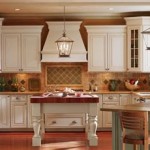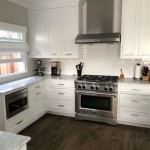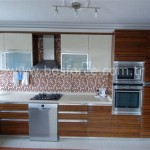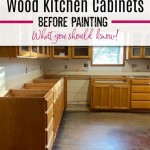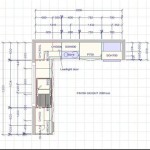Molding Kitchen Cabinet Doors: A Comprehensive Guide
Kitchen cabinet doors are more than functional components; they are integral to the overall aesthetic of a kitchen. The style and design of cabinet doors significantly influence the perceived value, ambiance, and functionality of the entire space. One critical aspect of cabinet door design is the molding, which adds dimension, character, and visual interest. Understanding the various types of molding, materials, and application techniques is essential for homeowners and professionals seeking to enhance the look and feel of a kitchen.
This article delves into the world of molding kitchen cabinet doors, exploring the different types of molding profiles, materials used, application processes, and factors to consider when choosing the right molding for a particular kitchen design. It provides a comprehensive overview to assist in making informed decisions on how molding can elevate the appearance of kitchen cabinets.
Types of Molding Profiles for Kitchen Cabinet Doors
The profile of a molding refers to its shape or cross-section. Different profiles evoke distinct styles and complement various kitchen design themes. Selecting the appropriate profile is crucial for achieving the desired aesthetic.
Raised Panel Molding: Raised panel molding is characterized by a central panel that is raised above the surrounding frame. This type of molding creates a sense of depth and dimension, often associated with traditional or formal kitchen designs. The raised panel can be a single piece or assembled from multiple components. Variations include ogee profiles, which feature a double curve, and beveled profiles, which slope inward toward the center.
Recessed Panel Molding: In contrast to raised panel molding, recessed panel molding features a central panel that is set back from the surrounding frame. This style offers a cleaner, more contemporary look, often found in Shaker-style cabinets. Recessed panels can be flat or slightly contoured, with simple, straight lines or subtle curves. The simplicity of recessed panels makes them versatile and adaptable to a wide range of kitchen designs, from modern minimalist to transitional styles.
Shaker Molding: Shaker molding is a subset of recessed panel molding, known for its clean lines and minimalist design. It typically consists of a simple, rectangular frame with a flat or slightly beveled recessed panel. Shaker-style cabinets are highly popular due to their timeless appeal and adaptability to various kitchen styles. The simplicity of the Shaker design can be easily customized with different materials and finishes.
Beaded Molding: Beaded molding incorporates a row of small, rounded beads along the edge of the frame. This adds a subtle decorative element and a touch of texture to the cabinet door. Beaded molding is often used in traditional or cottage-style kitchens, adding a touch of charm and detail. The size and spacing of the beads can vary, allowing for different levels of visual impact.
Applied Molding: Applied molding refers to molding that is attached to the surface of a cabinet door, rather than being integrated into the door's construction. This type of molding offers a wide range of design possibilities, as it can be applied in various patterns and configurations. Applied molding can be used to create decorative frames, corner details, or other embellishments. It is often used to customize existing cabinet doors and add a unique touch to a kitchen.
Ogee Molding: Ogee molding is characterized by its S-shaped curve, often used to create a more ornate and formal look. Ogee profiles can be found in both raised and recessed panel molding, adding a touch of elegance and sophistication. The specific curvature of the ogee profile can vary, from gentle curves to more dramatic sweeps, allowing for a range of design options.
Materials Used for Molding Kitchen Cabinet Doors
The choice of material for molding kitchen cabinet doors is crucial for both aesthetics and durability. Different materials offer varying levels of resistance to moisture, wear, and tear, as well as different finishing options.
Solid Wood: Solid wood is a classic choice for molding, prized for its natural beauty and durability. Popular wood species for kitchen cabinets include maple, oak, cherry, and walnut. Each species has its unique grain pattern and color, offering a range of aesthetic options. Solid wood is durable and can be easily repaired or refinished, but it is also susceptible to moisture damage and expansion/contraction with changes in humidity. It's generally more expensive than alternative materials.
Medium-Density Fiberboard (MDF): MDF is an engineered wood product made from wood fibers and resin. It is a cost-effective alternative to solid wood, offering a smooth, consistent surface that is ideal for painting. MDF is also less prone to warping or cracking than solid wood, making it a good choice for humid environments. However, MDF is not as durable as solid wood and can be damaged by prolonged exposure to water. It is a popular choice for painted cabinets due to its smooth surface and dimensional stability.
Wood Veneer: Wood veneer consists of a thin layer of real wood applied to a substrate, such as MDF or plywood. This allows for the look of solid wood at a lower cost. Wood veneer can be applied to complex shapes and profiles, making it a versatile option for molding. However, veneer is susceptible to damage from scratching or peeling and requires careful handling.
Polymer/Plastic: Polymer or plastic moldings are a durable and moisture-resistant option for kitchen cabinet doors. They are available in a variety of profiles and can be painted or stained to match the cabinet finish. Polymer moldings are resistant to warping, cracking, and insect damage, making them a low-maintenance option. They are often used in kitchens that are prone to moisture or high humidity.
Laminate: Laminate moldings consist of a thin layer of decorative paper or plastic bonded to a substrate, such as MDF or particleboard. Laminate moldings are available in a wide range of colors and patterns, including wood grain simulations. They are durable, easy to clean, and resistant to scratches and stains. However, laminate moldings are not as resistant to moisture as polymer moldings and may be prone to chipping or peeling.
Application Processes and Considerations
The application of molding to kitchen cabinet doors requires careful attention to detail to ensure a professional and long-lasting result. Proper preparation, accurate measurements, and appropriate adhesives or fasteners are essential for a successful installation.
Preparation: Before applying molding, the cabinet doors should be clean, dry, and free of any dust or debris. Existing finishes may need to be sanded or primed to provide a better surface for adhesion. The molding itself should also be clean and dry. If the molding is unfinished wood, it may need to be sanded and primed before painting or staining.
Measuring and Cutting: Accurate measurements are crucial for ensuring that the molding fits properly and creates a seamless appearance. Use a miter saw to cut the molding at the appropriate angles for corners and joints. A coping saw can be used to create precise joints for complex profiles. Carefully measure the dimensions of the cabinet door and the desired placement of the molding before cutting.
Adhesion and Fastening: The choice of adhesive or fastener will depend on the type of molding and the substrate. Construction adhesive is a common choice for attaching molding to cabinet doors, providing a strong and durable bond. For heavier moldings or those that require extra support, nails or screws may be used in conjunction with adhesive. Ensure that the fasteners are countersunk and filled with wood filler before finishing.
Finishing: After the molding is applied, it should be finished to match the cabinet doors. This may involve painting, staining, or applying a clear coat. Sand any rough edges or imperfections before applying the finish. Use high-quality paints or stains that are designed for use on wood or MDF. Apply multiple coats of finish, allowing each coat to dry completely before applying the next. Consider using a clear topcoat to protect the finish and enhance its durability.
Design Considerations: The style of the molding should complement the overall design of the kitchen. Consider the existing architectural details, the color scheme, and the hardware when selecting molding profiles. The size and scale of the molding should be appropriate for the size of the cabinet doors. Overly ornate molding may overwhelm smaller cabinets, while simple molding may look lost on larger doors. Consider the desired level of detail and visual interest when choosing molding profiles. A harmonious blend of molding style, cabinet design, and kitchen aesthetic will create a cohesive and visually appealing space.
Cost Considerations: The cost of molding kitchen cabinet doors can vary widely depending on the type of molding, the material, and the complexity of the installation. Solid wood moldings are generally more expensive than MDF or polymer moldings. Intricate molding profiles will also be more expensive than simple profiles. Consider the budget when selecting molding options. DIY installation can save on labor costs, but it requires skill and attention to detail. Professional installation will ensure a high-quality result, but it will also add to the overall cost.
By carefully considering these aspects, homeowners and professionals can select and apply molding to kitchen cabinet doors to significantly enhance the kitchen's overall appearance and value.

Add Moulding To Flat Cabinet Doors Home Kitchens Cabinets Kitchen

Adding Molding To Old Cabinets Diy Tutorial Kitchen Cabinet Doors

Kitchen Cabinet Doors With Applied Moulding By Allstyle

Home Dzine Kitchen Add Moulding And Trim To Cabinets Kitchens Redo Remodel Idea

Adding Moldings To Your Kitchen Cabinets Remodelando La Casa

10 Types Of Kitchen Cabinet Molding For Your Home

Adding Molding To Cabinet Doors Google Search Redo Kitchen Cabinets Remodel Refinish

11 Kitchen Cabinet Crown Molding Ideas For Your

Great Way To Add Interest Bathroom Or Kitchen Cabinets Ck This Out Wow Plain Cabinet Doors Home Diy

Fluted Kitchen Cabinet Doors And Molding The Benefits Of Millwork
Related Posts

